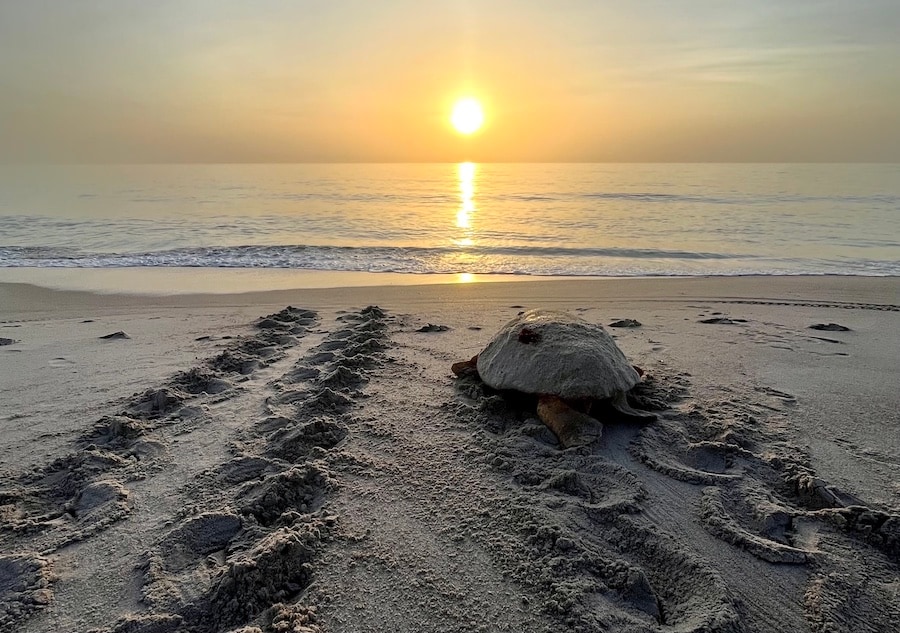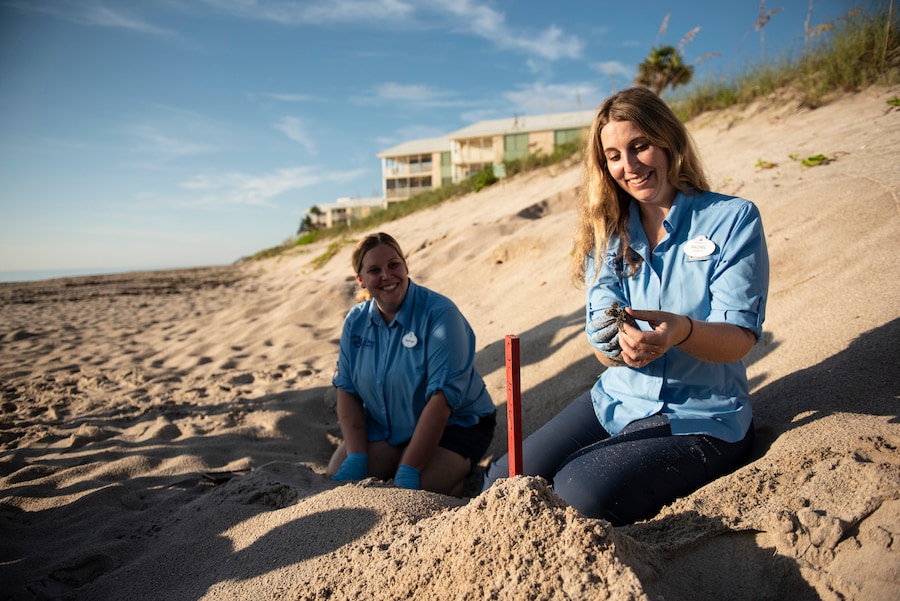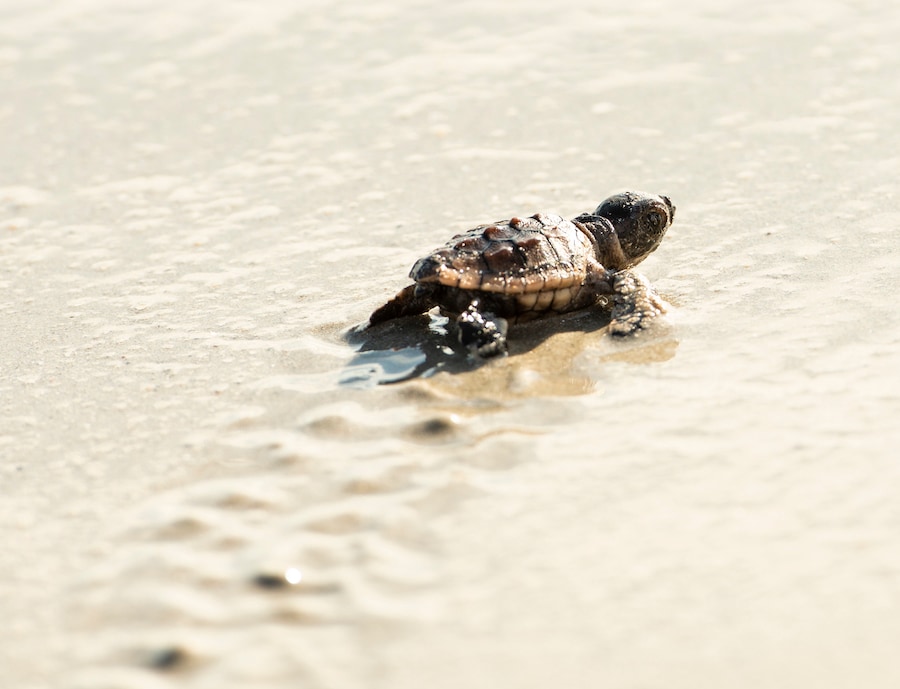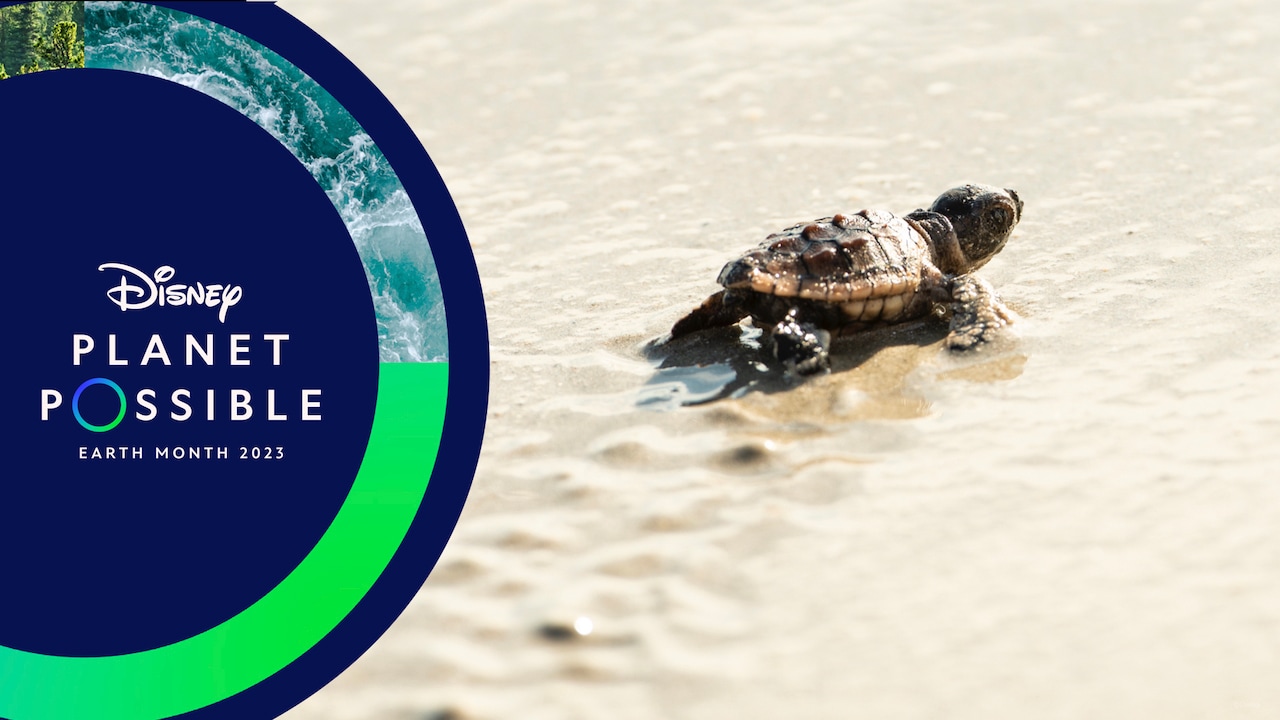It’s night. A crescent moon is high in the sky, providing just enough light to allow my eyes to adjust to the darkness of the open beach. A domed shape begins to materialize in the surf, and before I know it, I see the familiar face of a loggerhead sea turtle emerging from the waves. She plods up the beach, and then meticulously begins to construct her nest and deposit around 120 ping-pong ball sized eggs into the sand. These eggs will hatch in two months, and little sea turtles will begin their dash to the ocean. The females will return to this beach 30 years from now to begin the process all over again. It’s biology, but it’s so much more than that. Some might even call it magic.

For those in Florida, these loggerhead sea turtles may appear common as their nests begin to dot the beaches each spring, but that could not be further from the truth. To truly understand how sea turtles are faring, we must widen our lens and zoom out to see them from a global perspective. From a higher view, their conservation status appears clearer – and more dire. Florida’s loggerhead sea turtles make up 40 percent of the global population, with other nesting aggregations in steep decline due to fisheries bycatch, direct harvest, and impacts from climate change. The loggerhead population in southeast Florida is the largest and most stable, and still, we have not seen true signs of recovery.

This is where Disney’s sea turtle conservation program enters the picture. As we embark on our 20th year of sea turtle conservation efforts at Disney’s Vero Beach Resort, a Disney Vacation Club Resort, we are both inspired by what we have accomplished and humbled by the work that remains in the decades ahead. The Disney Conservation team has recorded more than 20,000 sea turtle nests on our survey route since the program began, which has resulted in an astounding 1.5 million sea turtle hatchlings that have taken their first flipper strokes on our beaches. This is an incredible conservation outcome made possible by nearly 19,000 hours of surveying the 5-mile stretch of beach at the Resort, connecting thousands of Guests and the public to sea turtles in responsible and impactful ways, participating in a statewide network committed to standardized data collection, and conducting innovative research exploring our relationship with sea turtles and how to best protect them into the future. Collectively, we have seen a remarkable recovery of green sea turtles in Florida, a conservation success story that should be celebrated. Yet, the future of our loggerheads remains uncertain.

Conservation – and especially sea turtle conservation – is a long game. Twenty years is certainly a long time, but a sea turtle’s lifespan is much longer. The threats they face are numerous, varied and virtually all caused by humans. Saving them will take innovation, creativity, persistence and above all – collaboration. So we, along with our sea turtle conservation partners around the world, are committed to protecting these ancient animals on their timetable. The Disney Conservation Fund continues to support innovative sea turtle research, such as Arizona State University’s solar-powered fishing net to minimize sea turtle bycatch in fisheries. Disney’s Conservation team continues to build the capacity of communities on the front lines of conservation through Team BEACH – a global human behavior change network to save sea turtles – in collaboration with The Oceanic Society and State of the World’s Turtles. At Disney’s Vero Beach Resort, we show up – each and every day of sea turtle nesting season – to continue our local monitoring and conservation efforts. We picture what’s possible when we all come together in pursuit of saving these sentinels of the sea. That optimism, paired with our ongoing dedication to a brighter future for these species, is exactly what Disney Planet Possible is all about.
For more on Disney’s commitment to sea turtle conservation, check out Season 2 of Magic of Disney’s Animal Kingdom, now streaming on Disney+.
All sea turtle activities described were conducted under Marine Turtle Permits 260 and 071.

